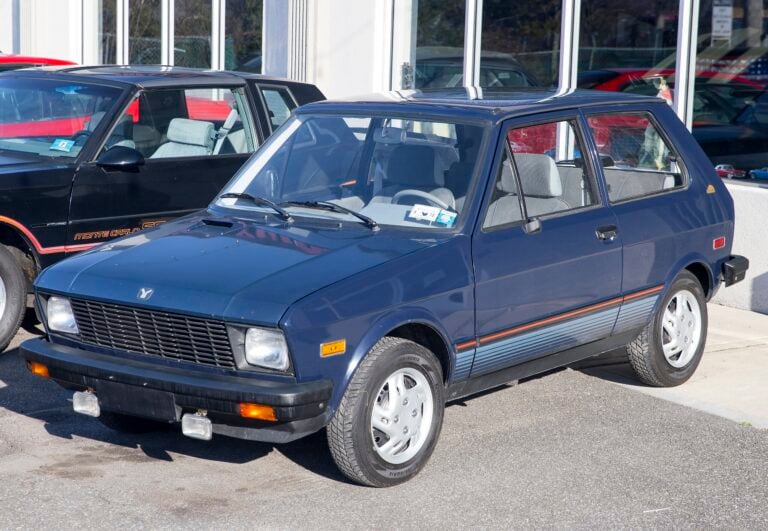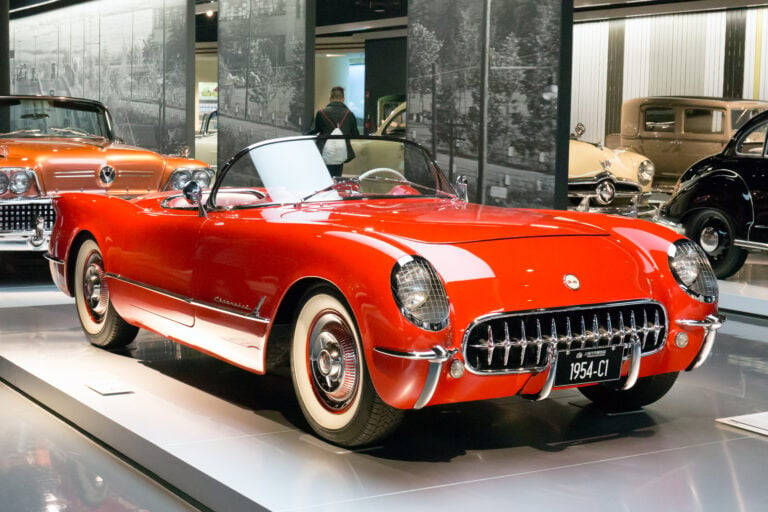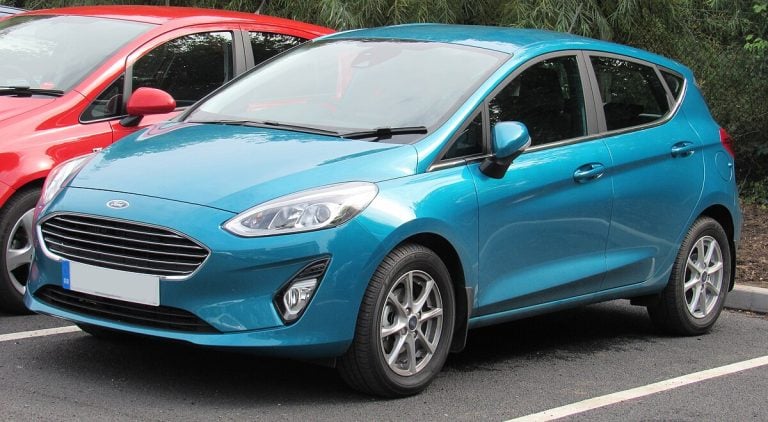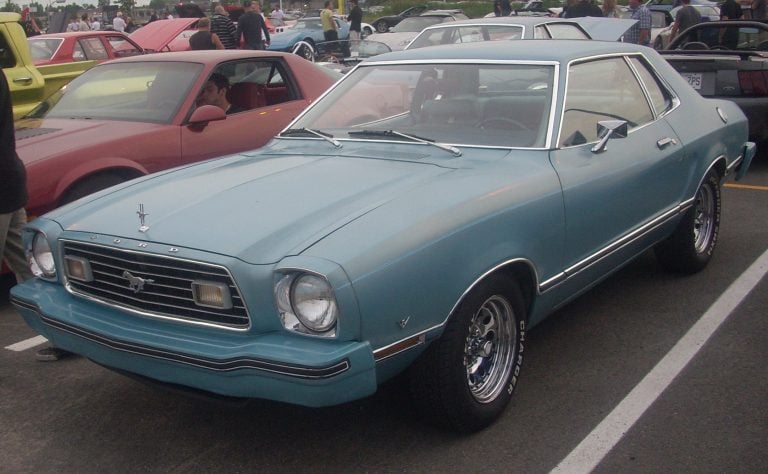The 30 Worst Jeep Models Ever Built: The Most Problematic Vehicles

Jeep has built a legendary reputation for rugged off-road capability and iconic design, but not every model has lived up to the brand’s storied heritage. While many Jeep vehicles have become beloved classics, others have struggled with reliability issues, poor engineering decisions, and design flaws that frustrated owners and tarnished the brand’s reputation.
Understanding which Jeep models to avoid can save potential buyers from costly repairs, reliability headaches, and disappointing performance both on and off the road.
From transmission failures and engine problems to rust issues and electrical gremlins, certain Jeep models have earned their place among the most problematic vehicles the company has ever produced.
This comprehensive analysis examines the specific years, engine combinations, and design choices that made these particular Jeeps fall short of expectations.
Here are the 30 worst Jeep models ever built:
1. Jeep Liberty (especially V6 models)

The Jeep Liberty earned its reputation as one of Jeep’s most problematic models during its 2002-2012 production run. The compact SUV faced numerous reliability issues that plagued owners throughout its lifespan.
V6 models experienced particularly severe engine problems. Many owners discovered significant mechanical failures as their vehicles approached 100,000 miles.
The worst model years span from 2002 to 2008, with 2008 being especially problematic. These early production years suffered from poor build quality and frequent breakdowns.
The Liberty’s reputation was further damaged by an excessive number of recalls. The vehicle accumulated 14 recalls in a single year, highlighting widespread manufacturing defects.
Later model years from 2009-2012 showed improvement but couldn’t overcome the model’s damaged reputation. The Liberty ranked poorly among Jeep’s lineup for overall reliability.
2. Jeep Compass First Generation
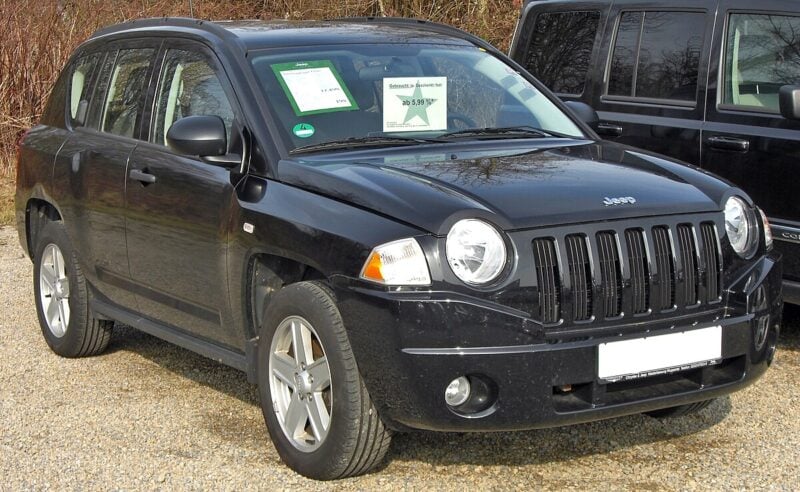
The first-generation Jeep Compass (2007-2016) failed to deliver on the brand’s core promise of rugged capability. Built on a Dodge Caliber platform, it lacked the power and off-road prowess expected from a Jeep.
Early models from 2007 and 2008 experienced significant mechanical problems. Control arm bushings frequently failed, creating safety concerns for drivers. The Totally Integrated Power Module (TIPM) caused electrical faults that left owners stranded.
Interior quality disappointed buyers with cheap materials and poor build quality. The weak engine options provided uninspiring performance that struggled in challenging conditions.
Water leaks plagued multiple model years, particularly 2011, 2014, and 2015. Purging valve failures and relay box problems added to the reliability concerns.
This crossover represented a departure from Jeep’s traditional strengths, prioritizing fuel efficiency over durability and capability.
3. Jeep Commander XK

The Jeep Commander XK ran from 2006 to 2010 and quickly earned a reputation as one of Jeep’s most problematic models. Early production years were particularly troublesome for owners.
The 2006 and 2007 models suffered from numerous complaints and reliability issues. These years experienced significant problems with build quality and component failures.
The 2008 model year continued the trend with widespread electrical issues. Heating and air conditioning systems frequently malfunctioned, leaving owners frustrated with costly repairs.
The Commander’s third-row seating was notoriously cramped and uncomfortable. This design flaw made the vehicle impractical for families despite its intended purpose as a family SUV.
Engine problems plagued multiple model years. Transmission issues also became common complaints among Commander owners.
The 2009 and 2010 models showed some improvement but couldn’t overcome the damage to the Commander’s reputation. Jeep discontinued the model after just five years of production.
4. Jeep Grand Cherokee 2011-2013 models

The 2011-2013 Jeep Grand Cherokee models earned their place among the worst due to widespread reliability issues. These years experienced significant transmission problems that plagued owners with frequent repairs.
Engine troubles were another major concern during this period. Many owners reported stalling issues and mechanical failures that required costly fixes.
The 2011 model year stands out as particularly problematic. It suffered from diesel engine problems and transmission faults that led to multiple recalls.
Electrical system malfunctions added to the frustration. Dashboard failures and lighting issues became common complaints among owners of these model years.
The 2012 model continued many of the same problems as its predecessor. Transmission issues remained a persistent concern for buyers.
These models required extensive recalls to address their numerous defects. The problems were eventually resolved in later production years, but the damage to these specific model years was already done.
5. Jeep Renegade First Generation

The first-generation Jeep Renegade (2015-2021) ranks among the most problematic Jeep models ever produced. This compact SUV generated 557 owner complaints during its production run.
The Renegade earned a disappointing 12th place out of 18 Jeep generations in overall reliability rankings. Early model years from 2015-2018 proved particularly troublesome for owners.
Engine problems plagued the first-generation Renegade throughout its lifespan. The available powertrains struggled with reliability issues that frustrated many buyers.
Electrical systems caused frequent headaches for Renegade owners. These problems often required expensive repairs and multiple dealership visits to resolve.
The 2015 and 2016 model years represent the worst examples of the first-generation Renegade. These early production models suffered from the most severe reliability issues and should be avoided by potential buyers.
6. Jeep Patriot Early Models

The Jeep Patriot’s early production years from 2007 to 2012 represent some of the most problematic models in the vehicle’s history. These first-generation Patriots suffered from numerous mechanical and electrical issues that plagued owners.
The 2008 model year stands out as particularly troublesome. It experienced frequent transmission overheating problems and engine reliability issues that left many drivers stranded.
The 2009 Patriot continued these reliability problems. Owners reported persistent electrical failures and premature component wear that required expensive repairs.
Models from 2007 through 2012 consistently ranked among the worst Patriot years. These vehicles often developed sunroof leaks, transmission failures, and various engine problems within the first few years of ownership.
The early Patriots struggled with build quality issues that affected their long-term durability. Many of these problems stemmed from rushed development and inadequate testing before market release.
7. Jeep Wrangler TJ with 4.0L engine (certain years)
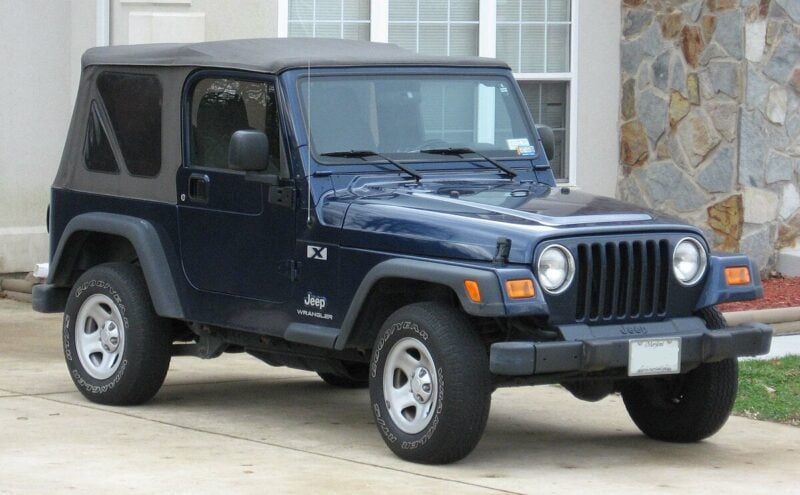
The Jeep Wrangler TJ’s 4.0L inline-six engine experienced significant problems in specific model years. The 2003-2006 models developed notorious head gasket issues that led to coolant leaks and potential engine damage.
The 2005 model year stands out as particularly problematic. This year saw widespread engine and transmission-related failures that plagued many owners.
Late-production TJ models from 2004-2006 suffered from quality control issues. These vehicles were manufactured with worn tooling, resulting in looser tolerances that contributed to premature engine failure.
The final years of TJ production marked a decline in the traditionally reliable 4.0L engine. Manufacturing inconsistencies during this period created reliability concerns that affected the engine’s reputation for durability.
8. Jeep Wagoneer SJ 1980s

The 1980s Jeep Wagoneer SJ models suffered from significant reliability issues that plagued the aging platform. By this decade, the SJ chassis was showing its age after nearly two decades in production.
Build quality deteriorated during the early 1980s under AMC ownership. Electrical problems became increasingly common, with faulty wiring harnesses and unreliable components.
The carburetor systems frequently malfunctioned, causing poor fuel economy and starting issues. Many owners experienced persistent stalling and rough idling problems.
Rust became a major concern, particularly around wheel wells and door frames. The body panels corroded rapidly in harsh weather conditions.
Transmission problems were widespread, with the automatic units failing prematurely. The transfer cases also developed leaking issues that required expensive repairs.
Despite Chrysler’s 1987 acquisition improving later models, the early-to-mid 1980s Wagoneers remain problematic choices for buyers seeking reliable transportation.
9. Jeep CJ-7 with AMC 258 engine

The CJ-7 with AMC 258 engine disappointed many Jeep enthusiasts despite its widespread use from 1972 to 1990. The 258 cubic inch inline-six produced only 110 horsepower in most applications, creating sluggish acceleration and poor highway performance.
This engine’s low power output made the CJ-7 struggle with basic tasks. The cast iron construction added significant weight without delivering proportional performance benefits.
The AMC 258 suffered from poor fuel economy compared to smaller engines while failing to provide adequate power for its displacement. Many owners found the engine’s performance particularly lacking when equipped with automatic transmissions.
The combination of heavy weight, low horsepower, and poor fuel efficiency made this powertrain one of the least desirable CJ-7 configurations. The engine’s reliability couldn’t compensate for its fundamental performance shortcomings in daily driving situations.
10. Jeep Cherokee XJ with 2.5L engine

The Jeep Cherokee XJ equipped with the 2.5L four-cylinder engine represents one of the most underpowered configurations in Jeep history. This engine simply lacked adequate power for the Cherokee’s size and weight.
The 2.5L unit produced insufficient torque for highway merging and hill climbing. Drivers frequently experienced sluggish acceleration and poor performance in demanding situations.
Fuel economy failed to compensate for the power deficit. Despite being a smaller engine, it worked harder to move the vehicle, resulting in disappointing gas mileage.
The engine struggled with overheating issues under heavy loads. Head gasket failures became common problems that plagued owners throughout the vehicle’s lifespan.
Most Cherokee XJ models with this engine came paired with a five-speed manual transmission. Even with the manual gearbox, the powertrain combination felt inadequate for daily driving needs.
11. Jeep Grand Cherokee WK2 diesel models
The WK2 generation Grand Cherokee diesel models suffered from numerous reliability issues that plagued owners. These vehicles were part of the fourth generation that debuted in 2011.
The diesel variants experienced frequent engine problems and transmission failures. Many owners reported costly repairs within the first few years of ownership.
Consumer Reports identified specific WK2 model years as among the worst performers. The 2011-2014 Grand Cherokee models received particularly poor reliability ratings.
Common issues included diesel particulate filter failures and emissions system malfunctions. The complex diesel emissions equipment proved problematic and expensive to repair.
The WK2 diesel models also faced recalls related to engine and electrical systems. These problems contributed to higher maintenance costs compared to gasoline variants.
Despite Jeep’s loyal following, the WK2 diesel models struggled with quality control issues that affected long-term dependability.
12. Jeep CJ-5 with certain engine variants
The Jeep CJ-5 enjoyed one of the longest production runs in automotive history from 1955 to 1983. However, certain engine configurations significantly undermined this otherwise capable off-road vehicle.
The early Perkins 192 I4 diesel engine proved problematic for many owners. This optional powerplant delivered poor performance and reliability issues that frustrated CJ-5 enthusiasts.
The Buick 225 V6 “Dauntless” engine also created problems despite its promising name. While it offered more power than the standard four-cylinder, it brought mechanical complexities that often outweighed its benefits.
Some early AMC engine variants experienced reliability concerns after AMC purchased Jeep from Kaiser. These engines sometimes suffered from poor manufacturing quality and inadequate engineering for the demanding off-road conditions CJ-5 owners expected.
The problematic engine options gave an otherwise solid platform a reputation for unreliability that affected resale values and owner satisfaction.
13. Jeep Compass 2011-2016
The Jeep Compass from 2011 to 2016 suffered from significant reliability issues that disappointed owners. These model years experienced frequent transmission problems, particularly with the CVT automatic transmission.
Interior quality remained subpar with cheap materials and poor fit and finish. The dashboard and door panels felt flimsy compared to competitors in the compact SUV segment.
Engine performance was lackluster across all available options. The 2.0-liter and 2.4-liter engines provided insufficient power for highway merging and passing situations.
Electrical problems plagued these years, including malfunctioning dashboard displays and faulty sensors. Water leaks around windows and doors created additional headaches for owners.
Off-road capability was minimal despite the Jeep branding. The Compass struggled on basic trails that other Jeep models handled easily.
Fuel economy failed to compensate for the performance shortcomings. Many owners reported lower-than-expected gas mileage during real-world driving conditions.
14. Jeep Grand Cherokee 1999-2004
The second-generation Grand Cherokee marked a significant departure from its predecessor. Despite introducing the new WJ platform with improved handling and comfort, these models suffered from numerous reliability issues.
Transmission problems plagued this generation consistently. Owners reported frequent transmission failures and costly repairs. The 4.7-liter V8 engine, while praised for performance, developed mechanical issues over time.
Grand Cherokee owners filed 468 complaints about these model years. Engine concerns became particularly problematic as vehicles aged. Window regulators frequently failed, leaving drivers unable to operate windows properly.
The 1999 model year introduced many new features but also brought teething problems. Despite the enhanced Quadra-Drive system receiving acclaim, the overall reliability suffered compared to competitors.
These models rank poorly in long-term dependability studies. Repair costs often exceeded expectations for owners seeking a reliable SUV option.
15. Jeep Wagoneer XJ
The Jeep Wagoneer XJ represented a significant departure from traditional Jeep design philosophy. This model prioritized on-road comfort over the rugged off-road capabilities that defined the brand.
The XJ Wagoneer featured a unibody construction instead of the body-on-frame design that made previous Jeeps durable. This change reduced structural strength and off-road performance.
Engine options proved underwhelming for a vehicle of its size and weight. The available powertrains struggled to deliver adequate performance for both daily driving and recreational use.
Build quality issues plagued the XJ Wagoneer throughout its production run. Owners frequently reported electrical problems, transmission failures, and premature component wear.
The model failed to capture the essence of what made Jeeps appealing to enthusiasts. Its compromise between comfort and capability satisfied neither demographic effectively, leading to disappointing sales figures and market reception.
16. Jeep Wrangler JK Early Models
The early JK generation Wranglers from 2007 to 2011 represent a low point in the model’s reliability history. These vehicles earned a disappointing 6 out of 10 reliability score from automotive experts.
The 2007 and 2008 models suffered from numerous mechanical failures during their first years of production. Common issues included transmission problems, electrical system malfunctions, and engine-related defects.
The 2012 JK model stands out as particularly problematic among early JK variants. This year experienced widespread engine troubles, transmission failures, and persistent check engine light issues that mechanics struggled to resolve.
Many owners reported transmission failures occurring multiple times within short ownership periods. Some experienced complete transmission breakdowns with fewer than 100,000 miles on the odometer.
The early JK models’ reputation became so tarnished that some Jeep enthusiasts jokingly claimed the “JK” designation stood for “just kidding.”
17. Jeep Cherokee KK (Liberty 2008-2012)
The KK generation marked the final years of the Liberty nameplate before reverting to Cherokee. This model attempted to recapture the original boxy styling cues while retaining the unibody construction from its predecessor.
The KK failed to generate significant enthusiasm among Jeep enthusiasts. Many remained attached to earlier Cherokee generations or had higher expectations from newer models.
Common reliability issues plagued the KK throughout its production run. The Evaporative Emissions Control system caused frequent problems for owners. Bad spark plugs were another recurring maintenance concern.
The 2008 model year proved particularly problematic among the KK generation. Industry reviews and consumer feedback consistently ranked it among the worst Liberty years.
Despite modern features and updated styling, the KK couldn’t overcome its reputation for reliability problems. The model’s short four-year production run reflected its lukewarm reception in the marketplace.
18. Jeep Grand Wagoneer ZJ
The Grand Wagoneer ZJ represents a confusing chapter in Jeep’s history. Produced from 1993 to 1998, this model borrowed the Grand Wagoneer name from the classic full-size SUV but applied it to a luxurious version of the Grand Cherokee platform.
The ZJ suffered from significant reliability issues typical of the era. Electrical problems plagued many units, causing failures in various systems. The vehicle’s complex luxury features often malfunctioned, leading to expensive repairs.
Build quality remained inconsistent throughout production. Many owners reported issues with interior trim pieces breaking or coming loose. The advanced features for its time, including power accessories, frequently failed prematurely.
The Grand Wagoneer ZJ also faced identity confusion in the marketplace. Buyers expected the ruggedness of the original Wagoneer but received a luxury SUV with questionable dependability instead.
19. Jeep CJ-6 Vintage Models
The CJ-6 debuted in 1955 with an extended wheelbase design that promised versatility. However, this stretched platform created significant handling issues that plagued the model throughout its production run.
The longer wheelbase made the CJ-6 unwieldy on tight trails. Its turning radius suffered compared to the more compact CJ-5, limiting its off-road capability in technical terrain.
Early models came with underpowered engines that struggled to move the heavier, longer frame effectively. The Perkins 192 I4 diesel option provided poor performance for most applications.
Build quality remained inconsistent during the Kaiser era. Many vintage CJ-6 models suffered from rust issues and structural problems that became apparent after several years of use.
The CJ-6’s awkward proportions never quite found their intended market. It was too long for serious off-roading yet lacked the refinement needed for comfortable daily driving.
20. Jeep Wagoneer SJ early 90s
The early 1990s marked the twilight years of the original Jeep Wagoneer SJ platform. This generation had been in production since 1963, making it increasingly outdated by the time it reached the early 90s.
The 1990-1991 model years suffered from poor build quality and reliability issues. These final SJ Wagoneers used aging technology that hadn’t kept pace with modern automotive standards.
Common problems included electrical system failures and transmission issues. The dated design also meant poor fuel economy compared to newer SUV competitors entering the market.
The SJ platform was finally discontinued after the 1991 model year. By then, the Wagoneer had fallen behind in safety features, interior quality, and overall refinement that buyers expected from luxury SUVs.
These last SJ Wagoneers represented a once-innovative vehicle that had simply outlived its usefulness in the automotive market.
21. Jeep Grand Cherokee WJ transmission issues
The WJ Grand Cherokee, produced from 1999 to 2004, suffered from significant transmission problems that plagued owners throughout its production run. These issues primarily affected both the 4.0L and 4.7L engine variants.
Common problems included rough shifting, with drivers experiencing jerking or hesitating when gears changed. The transmission would sometimes fail to downshift properly, particularly when coming to a stop, leaving the vehicle stuck in second gear.
Internal component failures were frequent, with snap rings breaking apart and contaminating the transmission fluid. Owners often discovered metal debris in the transmission pan during routine maintenance.
The 545RFE transmission used in later WJ models showed particular vulnerability to electronic control issues. Many drivers reported the transmission refusing to shift beyond fourth gear or failing to engage first gear properly.
These transmission problems required expensive repairs or complete replacement, making the WJ one of the more problematic Grand Cherokee generations.
22. Jeep Patriot plastic intake manifold models
The Jeep Patriot’s plastic intake manifold became a significant reliability concern across multiple model years. This component proved vulnerable to cracking and failure under normal operating conditions.
Models from 2007 through 2012 experienced the most frequent intake manifold problems. The plastic construction couldn’t withstand engine heat cycles and vibration over time.
When the intake manifold fails, drivers experience rough idling, poor acceleration, and engine misfires. The plastic develops cracks that allow air leaks, disrupting the air-fuel mixture.
Replacement costs typically range from $800 to $1,500 including labor. Many owners discovered this expensive repair shortly after purchasing used Patriots.
The 2008 and 2009 model years showed particularly high failure rates. These early Patriots combined the problematic plastic manifold with other reliability issues that made them poor choices for used car buyers.
23. Jeep Renegade 2017 Early Production
The 2017 Jeep Renegade’s early production models suffered from significant reliability issues that plagued owners. These vehicles carried forward many of the transmission problems that affected previous model years.
Electrical system failures remained a persistent concern in early 2017 models. Owners reported various electronic malfunctions that created safety and convenience issues.
The transmission continued to be problematic, with reports of rough shifting and premature failure. These drivetrain issues often required expensive repairs outside of warranty coverage.
Engine stalling problems persisted in some early production units. This created dangerous driving conditions and left owners stranded unexpectedly.
While later 2017 production models showed some improvements, the early units maintained the troublesome patterns established in 2015 and 2016 model years. Buyers should exercise caution when considering these specific early production vehicles.
24. Jeep Liberty KJ transmission problems
The Jeep Liberty KJ faced significant transmission reliability issues during its production run from 2002 to 2012. Many owners reported problems with the 45RFE automatic transmission, particularly in early model years.
Common symptoms included harsh shifting, jerking during gear changes, and the transmission slipping into what felt like neutral. Some drivers experienced complete failure to shift into gear properly.
The transmission problems typically manifested around 95,000 miles, though some vehicles showed issues earlier. Early warning signs included unusual thumping sounds during downshifts and erratic shifting behavior.
These transmission failures often required expensive repairs or complete replacement. The issues were particularly prevalent in the 2002-2005 model years, which are considered among the worst Liberty years to avoid.
The transmission problems contributed significantly to the Liberty KJ’s poor reliability reputation and high maintenance costs for owners.
25. Jeep Commander XK engine troubles
The Jeep Commander XK suffered from significant engine problems that undermined its reliability reputation. These issues primarily affected the 2006 and 2007 model years.
Engine stalls and unexpected shutdowns while driving became common complaints among owners. These dangerous malfunctions could occur without warning during operation.
The 5.7L HEMI V8 engine experienced particular reliability concerns. Many owners reported various engine-related symptoms that required costly repairs.
Electrical problems compounded the engine troubles in certain model years. The 2008 Commander also faced heating and air conditioning system failures.
The Commander ranks fourth in reliability among Jeep models, with 255 owner complaints filed over its production run. Engine issues dominated these complaints, making the XK one of the more problematic Jeep vehicles.
26. Jeep Grand Cherokee ZJ 1993-1998
The first-generation Grand Cherokee ZJ suffered from numerous reliability issues that frustrated owners throughout its production run. Early models experienced particularly severe problems due to rushed production schedules.
Death wobble became a notorious issue plaguing these vehicles. The front axle would violently oscillate, causing dangerous shaking that made the vehicle difficult to control at highway speeds.
Build quality inconsistencies marked the ZJ generation. Jeep struggled to meet high demand, leading to quality control problems that affected reliability and durability.
Electrical system failures were common complaints among owners. Window regulators, door locks, and various sensors frequently malfunctioned, creating expensive repair bills.
The 1993-1998 model years consistently rank among the worst Grand Cherokee generations. Despite decent off-road capabilities, the ZJ’s reliability problems overshadowed its strengths and created lasting negative impressions for many buyers.
27. Jeep Wrangler YJ 1987-1995
The Jeep Wrangler YJ marked the first generation of the iconic off-road vehicle. This model ran from 1987 to 1995 and introduced several controversial design changes.
The most notable feature was the rectangular headlights, which replaced the traditional round ones. Many Jeep enthusiasts criticized this bold design departure from classic styling.
Safety concerns plagued the YJ series throughout its production run. These vehicles lacked essential safety features like airbags that became standard in other cars during the 1990s.
The YJ earned a reputation for rollover issues due to its high center of gravity and narrow wheelbase. This made it less stable during sharp turns or emergency maneuvers.
Engine problems affected several model years, particularly from 1987 to 1991. These reliability issues created ongoing maintenance headaches for owners.
28. Jeep Cherokee KL Early Years
The Cherokee KL generation launched in 2014 with immediate problems that plagued its early production years. The first three model years from 2014 to 2016 experienced significant reliability issues and frequent recalls.
These early KL models suffered from transmission problems, particularly with the nine-speed automatic. Drivers reported rough shifting, hesitation, and complete transmission failures within the first few years of ownership.
The Cherokee KL’s modernized design alienated traditional Jeep enthusiasts who expected more rugged capability. Its car-like appearance and unibody construction departed from the brand’s traditional off-road identity.
Despite offering all-wheel drive options, the early KL models felt underwhelming in performance compared to previous Cherokee generations. The combination of mechanical issues and design changes made these early years particularly problematic for owners.
29. Jeep Wagoneer SJ with leaking fuel tanks
The Jeep Wagoneer SJ faced significant fuel tank problems that plagued owners for years. These full-size SUVs developed persistent fuel leaks that created safety hazards and expensive repairs.
The most common issue involved leaking from the top of the fuel tank. This occurred when tanks were filled to capacity, causing fuel to spill onto the ground beneath the vehicle.
Multiple factors contributed to these fuel system failures. Cracked plastic fuel tanks were frequent culprits, particularly as vehicles aged. Deteriorating fuel supply and return lines also caused leaks.
The problem extended beyond simple inconvenience. Fuel leaks created fire hazards and environmental concerns while leaving owners with costly repair bills.
Replacement fuel tanks became increasingly difficult to source as the vehicles aged. Many aftermarket suppliers stopped manufacturing replacement tanks for these models, forcing owners to seek expensive alternatives or abandon their vehicles entirely.
30. Jeep Wrangler JK 2012-2013 frame rust problems
The 2012-2013 Jeep Wrangler JK models experienced notable frame rust issues that affected their structural integrity. These problems were particularly concerning for owners in northern climates where road salt exposure accelerated corrosion.
Frame rust in these JK models typically developed from the inside out, making detection difficult during routine inspections. The rust formed when moisture and oxygen created iron oxide on the metal surfaces.
Owners reported rust problems primarily in areas with poor drainage and salt exposure. The corrosion often began in small holes and cavities within the frame structure where water could accumulate.
Some 2012-2013 JK owners discovered extensive rust damage only after several years of ownership. The problem was severe enough that certain vehicles required complete frame replacement or became unsafe to drive.
Regular inspection of the frame’s interior surfaces became essential for early detection of rust development in these model years.
Common Design Flaws in Jeep History
Throughout decades of production, certain design patterns have repeatedly caused problems across multiple Jeep models. These recurring issues stem from compromised engineering decisions that prioritized cost-cutting over durability and driver experience.
Mechanical Reliability Issues
Transmission Problems plague numerous Jeep models, particularly those equipped with automatic transmissions. The 42RLE four-speed automatic transmission suffered from premature failure across multiple model years. This unit experienced overheating, harsh shifting, and complete breakdowns.
Engine Defects appeared consistently in specific powertrains. The 3.8-liter V6 engine delivered insufficient power while consuming excessive fuel. This engine struggled with oil consumption and timing chain issues.
Electrical System Failures became commonplace in many Jeep models. The Totally Integrated Power Module (TIPM) caused widespread problems including stalling, power loss, and component failures. These electrical gremlins affected everything from fuel pumps to lighting systems.
Cooling System Inadequacies resulted in overheating across various models. Radiator placement and airflow design often proved insufficient for demanding off-road conditions. Water pump failures occurred frequently due to poor component quality.
Safety and Handling Concerns
Suspension Design Flaws created dangerous handling characteristics in several models. Live axle configurations combined with inadequate damping led to unpredictable behavior on pavement. Death wobble syndrome affected many Wrangler models due to worn suspension components.
Rollover Tendencies emerged from high center of gravity designs. Early Cherokee and Wrangler models received poor stability ratings from safety organizations. The narrow track width relative to height created inherent instability.
Braking System Deficiencies compromised stopping power in critical situations. Brake fade occurred frequently during mountain driving. The anti-lock braking systems often malfunctioned, leaving drivers without proper stopping assistance.
Steering Problems affected driver control across multiple generations. Power steering systems failed prematurely, creating dangerous situations at highway speeds.
Interior and Comfort Shortcomings
Build Quality Issues resulted in premature wear and component failure. Dashboard cracking became endemic across numerous models due to inferior plastic materials. Door handles broke frequently from normal use.
Ergonomic Failures created uncomfortable driving positions. Seat design lacked proper support for long-distance travel. Control placement often defied logical operation, forcing drivers into awkward positions.
Climate Control Defects left occupants uncomfortable in extreme weather. Air conditioning systems failed regularly due to inadequate compressor design. Heating systems provided insufficient warmth in cold climates.
Noise and Vibration Problems plagued cabin comfort. Wind noise penetrated poorly sealed doors and windows. Road noise transmitted through inadequate sound dampening materials.
Impact of Poor-Performing Jeeps on Brand Reputation
Jeep’s reputation has suffered significantly due to problematic models that have plagued the brand for decades. Consumer Reports ranked Jeep as America’s worst car brand, while reliability issues have eroded buyer confidence and damaged resale values across multiple model lines.
Consumer Trust and Loyalty
Jeep currently holds the lowest position in Consumer Reports’ brand rankings, marking a dramatic fall from grace for the iconic off-road manufacturer. This placement reflects widespread reliability problems across the brand’s lineup.
The decline stems from management changes that prioritized profits over manufacturing quality. This shift undermined Jeep’s hard-earned reputation within just a few years of record sales performance.
Key trust issues include:
- Frequent recalls affecting safety-critical systems
- Poor quality control during assembly processes
- Supplier-related problems affecting component reliability
The 2021-2023 Wrangler 4XE recall exemplifies these problems. The recall addressed engines shutting off unexpectedly while driving, creating dangerous situations for owners.
Many Jeep owners report incorrectly installed parts and manufacturing damage. These quality control failures have created performance, safety, and reliability problems that extend beyond individual models.
Resale Value Implications
Poor reliability ratings directly impact Jeep resale values across all model segments. Vehicles with documented reliability problems typically depreciate faster than competitors with stronger track records.
Models like the Liberty demonstrate this pattern clearly. The Liberty’s poor off-road performance and reliability issues make used Cherokee XJ models more desirable despite their age.
Factors affecting resale values:
- Reliability ratings from Consumer Reports and similar organizations
- Recall frequency and severity of safety-related issues
- Repair costs associated with common problems
The brand’s reputation for expensive repairs compounds the resale value problem. Potential buyers often avoid Jeep models due to anticipated maintenance costs rather than purchase price alone.
Dealers frequently struggle to move problematic Jeep models off their lots. This creates a cycle where poor-performing vehicles further damage the brand’s overall market perception.

